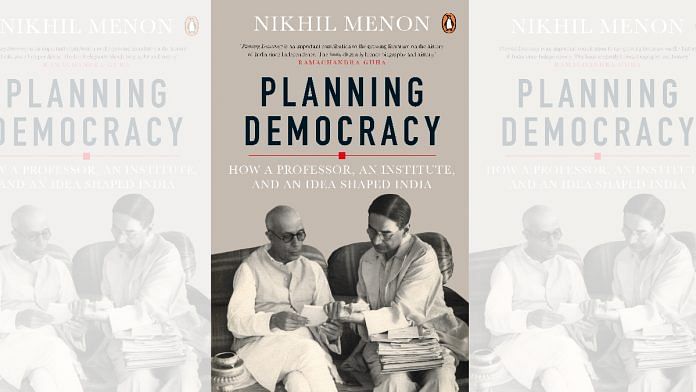
New Delhi: After nearly two centuries of colonial rule, newly-independent India began focusing on planning its economy, hoping this would be its route from poverty to prosperity. A new book ‘Planning Democracy’ looks closely at this exercise to understand the Indian state and the nature of Indian democracy.
Published by Penguin India, ‘Planning Democracy’ by Nikhil Menon will be released on 8 June on ‘SoftCover’, ThePrint’s online venue to launch non-fiction books.
In this compelling history, Menon, an assistant professor of history at the University of Notre Dame, brings the world of planning to life by exploring how India married a liberal democracy to a socialist economy.
The book interprets planning as a means of nation-building, in the aftermath of the empire, and follows the history of the Nehruvian state told through the prism of planning or an account of the Five-Year plans — which were discontinued by the Narendra Modi government. These plans were considered to be one of the developing world’s most ambitious experiments at the time.
“Planning, I argue, triggered the development of data infrastructures and dramatically expanded the state’s footprint, particularly its ability to govern the economy, ” the author said.
The book is divided into two sections – Data and Democracy – and recasts our understanding of the Indian republic, uncovering how planning came to define the nation and revealing the ways in which it continues to shape our world today.
It traces the story of a gifted scientist known as the ‘Professor’, a trail-blazing research institute in Calcutta, and the idea of ‘democratic planning’. Set amid global conflicts and international debates, Menon reveals how India walked a tightrope between capitalism and communism.
Talking about the book, author Ramachandra Guha said the text is an “important contribution to the growing literature on the history of India since independence”. “The book elegantly blends biography and history, exploring how a group of politicians and scholars once made the idea of “planning” central to the Indian Republic. The author has skillfully minded a wide array of primary sources, and his pen portraits are particularly well done,” he said
Author Pratap Bhanu Mehta praised the book, calling it a “refreshing look at how the discourse of developments was constituted”. “This book will help us rethink how planning for development took hold in India’s democratic imagination. Its fresh research delves into two neglected aspects of the planning process in India in the fifties. The first is the creation of a world-class institutional base for statistics by the formidable figure of Mahalanobis. It also looks at ingenious attempts at enlisting everything from Sadhus to Bollywood in publicizing Five-Year Plans,” Mehta said.
Also read: Ad-guru Alyque Padamsee leaves behind ‘commandments’ for present generation in new book

COMMENTS